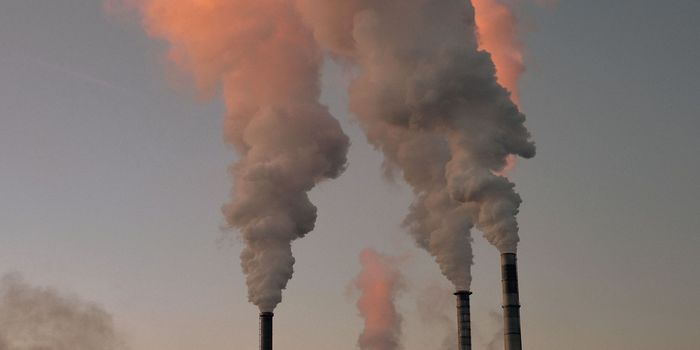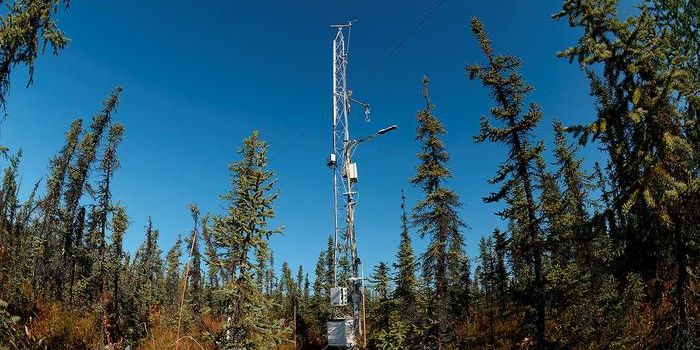Some Gases Released by Plants Have a Powerful Impact on Cloud Formation
Plants release gaseous hydrocarbons called sesquiterpenes. Scientists have now found that sesquiterpenes are a significant factor in cloud formation. Right now, there is still debate about how much warming the planet might experience before 2100. It could be somewhere between 1.5 to 4.4 degrees Celsius warmer than pre-industrial levels according to the Intergovernmental Panel on Climate Change (IPCC). Other projections using various scenarios have suggested that at the lower warming levels there will be 3.3 degrees of warming, but worst-case scenarios have temperatures up to 5.7 degrees Celsius higher. New work, which was reported in Science Advances, could help reduce uncertainties in models to make climate predictions more accurate.
One major problem with making predictions about high temperatures decades from now is that there is still a lot we don't know about how different gases and aerosols influence the atmosphere. Cloud cover is a significant factor, for example, because clouds can reflect solar radiation and help cool the earth. The CLOUD project (Cosmics Leaving Outdoor Droplets) by CERN scientists is aiming to decipher some of these mysteries.
Water vapor can condense on solid or liquid particles about 0.1 to 10 micrometers in diameter to make condensation nuclei, the seeds that form clouds. Many aerosols that are both natural and human-made can provide those particles; they might include sea salt, desert sand, wildfire emissions, or industry and transportation pollutants, for example.
It's thought that different gaseous molecules come together in the air and turn into solids in a process called nucleation. These particles are very tiny at first but can grow larger, and they can eventually become condensation nuclei. As much as half of condensation nuclei could originate this way.
Sulfur dioxide is produced when coal or fuel burns, and is thought to be the primary human-made contributor to particle formation. Natural gases released mostly by vegetation that are significant contributors include isoprenes, monoterpenes, and sesquiterpenes.
"It should be noted that the concentration of sulfur dioxide in the air has decreased significantly in recent years due to stricter environmental legislation and it will continue to decrease," said Lubna Dada, an atmospheric scientist at the Paul Scherrer Institute and CLOUD project member.
But terpene concentration is rising because plants release more of these gases when they are under stresses like high temperatures or drought, noted Dada.
The contribution of monoterpenes and isoprene to cloud formation has been improved because of field measurement advances and laboratory experiments. Now it's time to learn about sesquiterpenes. They have been challenging to measure because they are more rare than other molecules and they react with ozone quickly, said Dada.
About 24 million metric tons of sesquiterpenes, 91 million metric tons of monoterpenes, and 465 million metric tons of isoprene are released annually. It seems that sesquiterpenes, however, are leading to the creation of ten times more particles than the other two gaseous substances at equal concentrations.
The researchers used a special sealed room at CERN to make these determinations.
When a natural mix of isoprene, monoterpenes, and sesquiterpenes oxidized in pure air, a wide variety of organic compounds were generated. These compounds are known as ULVOCs (Ultra-Low-Volatility Organic Compounds), and they form particles efficiently.
If only isoprenes and monoterpenes were mixed, and then sesquiterpenes were added, the rate of particle formation increased dramatically. Only a two percent addition of sesquiterpenes doubled the particle formation rate. This happened because sesquiterpene molecules have fifteen carbon atoms, but monoterpenes have ten and isoprenes have five, said Dada.
The study showed that vegetation can affect weather and climate., and that sesquiterpenes are important to consider in future climate models, along with isoprenes and monoterpenes, to increase accuracy in predictions. As the climate changes and plants are under more stress, sesquiterpenes may become more significant. More research is also needed.
Sources: Paul Scherrer Institute, Science Advances









